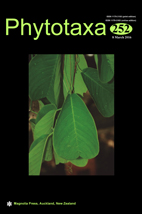Abstract
A new diatom genus, Cribrionella gen. nov., is described from Quaternary sediments of Lake Ohrid. Cribrionella comprises distinct morphological features, such as: i) presence of submarginal alveoli followed by regularly or irregularly arranged areolae, ii) cribra on external areolar openings, iii) absence of silicate layers on internal areolar openings, but presence of thick and inwardly raised circumferential silica trabeculae, iv) rimoportulae positioned on costae, and v) absence of central fultoportulae. Detailed light and scanning electron microscope analyses were undertaken and used for comparison to morphologically related genera. The typus generis Cribrionella ohridana is compared to species from its morphologically closest genus Cyclotella sensu stricto (e.g., C. atomus, C. delicatula, C. bifacialis). Cribrionella ohridana has not been reported from the extant diatom flora of Lake Ohrid, nor in the nearby Lake Prespa. The discovery of a new genus in Lake Ohrid confirms again the importance of the lake, not only in light of species richness and endemicity, but also in evolutionary history of the family Stephanodiscaceae.

